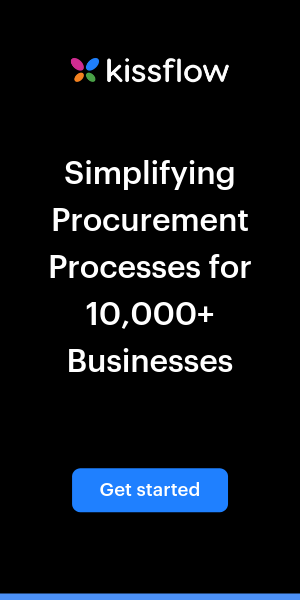Vendor performance has a huge impact on an organization’s success. Quite often, organizations use it as a benchmark to evaluate the efficiency of the procurement process and its role in the business’s success.
A vendor who offers excellent goods and service will continue to deliver value regardless of your vendor management process or purchasing contract. At the same time, a comprehensive contract or a brilliant sourcing strategy will do nothing if the vendor fails to fulfill the expectations.
When your vendors are so integrated into your business, even supply chain risks that are caused by compliance issues can impact your brand’s image and reputation. So, unless you want your organization’s image in tatters, procurement teams need to focus on not just choosing the best vendors but managing them consistently throughout their lifecycle.
Here’s everything you need to know to manage your vendors like a pro.
What is vendor lifecycle management?
Vendor lifecycle management is defined as the cradle-to-grave approach of managing vendors in a transparent and structured way. Vendor lifecycle management places an organization’s vendors at the heart of its procurement process by recognizing their importance and integrating them in the procurement strategy.
It describes a set of eight activities that cover all aspects of dealing with vendors throughout their vendor lifecycle:
- Initial identification and engagement
- Vendor qualification and risk mitigation
- Evaluation and selection
- Vendor onboarding and information management
- Performance management
- Supply risk management
- Vendor relationship management
- Vendor offboarding
3 phases of vendor lifecycle management
The eight steps involved in vendor lifecycle management can be split into three main phases.
1. Pre-contract
The first phase of vendor lifecycle management starts with the process of need identification and solicitation. Solicitation is the process of informing potential vendors about an organization’s need to acquire specific goods or services.
Documents like requests for proposals (RFPs) and invitation to bid (ITB) are used to give all vendors a level playing field. Once the proposals are received, they are registered, stored, opened, and analyzed by authorized procurement officers to ensure transparency and confidentiality.
A handful of vendors are shortlisted based on the offers and moved to the qualification stage. In the qualification stage, the shortlisted vendors are put through a robust due diligence process where they provide a defined set of confidential information about their business.
The obtained information is then cross-checked to verify a supplier’s stability and health. Organizations around the world use one or a combination of the methods listed to below to evaluate whether or not a vendor is eligible for a contract award:
- Lowest price
- Technical responsiveness
- Compliant offer
- Weighted scoring (a combination of cost and quality)
2. Contract
Once a vendor is selected for the contract, he/she undergoes a vendor onboarding process. In this stage, a vendor profile is created by gathering robust multi-dimensional data from vendors. This information is then stored securely and shared with all stakeholders who have a vested interest in the procurement process.
Vendor information management happens to be a key subset of vendor lifecycle management and the contractual phase, stretching from the initial contact with a potential vendor through to the strategic vendor relationship management and the end of a vendor relationship.
It also covers the aspects of risk management, ongoing contract performance monitoring, and more. Another important subset of the contractual phase is vendor performance management. Keeping a close eye on a vendor’s performance can help organizations uncover risky situations.
Every active vendor is continuously monitored and evaluated for changes in behavior or product quality. Being aware of potential changes in a vendor’s performance can reduce the chances for an unexpected or risky supply chain disruption.
3. Post-contract
Post-contract close out initiatives are pretty straightforward for low-value vendor contracts. However, if it is a complex, high-value purchasing contract, the vendor offboarding process is anything but simple.
To ensure that a vendor is offboarded properly, the procurement officers need to make sure that all contractual obligations have been fulfilled and verify if there are any residual obligations, like warranties, after-sales service/support are involved.
In case of any residual obligation, responsibility, liability, procedures involved, and other terms need clearly defined and fulfilled by the supplier. If everything seems to be in order, then a vendor can be offboarded with the help of a vendor offboarding checklist. Vendor offboarding brings the vendor lifecycle management process to a full cycle.
Streamline Your Procurement Process With Kissflow
How an eProcurement solution can take care of the vendor management cycle?
eProcurement solutions are designed to take care of the entire procure-to-pay cycle, which includes the vendor management lifecycle. They have function-focused tools, that take care of key procurement functions like vendor onboarding, vendor rating, and vendor selection–among others.
Using such a solution, you get access to a comprehensive set of tools to qualify, evaluate, onboard, measure, monitor, and manage the vendor lifecycle more effectively.
Summary
A cloud-based procurement software like Kissflow Procurement Cloud is an ideal solution to managing the vendor lifecycle. Kissflow lets organizations create a dynamic vendor management process that provides them with a tactical advantage.
You can use vendor management tools and resources that every business needs to digitize this function end-to-end.
Check Kissflow out right now–simply sign up for a free, in-depth demo that will show just how much it can impact your vendor management lifecycle.



